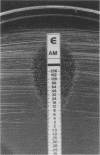Abstract
The E-test (PDM Epsilometer; AB Biodisk, Solna, Sweden) is an antimicrobial agent gradient-coated plastic test strip which allows MIC determinations on agar media. The test is performed in a manner similar to the agar disk diffusion procedure. A collection of Haemophilus influenzae and Streptococcus pneumoniae strains possessing various resistance mechanisms was used to evaluate the E-test method. H. influenzae strains were tested with both Haemophilus test medium (HTM) and PDM ASM II chocolate agar, while the S. pneumoniae strains were tested on Mueller-Hinton sheep blood agar. E-test MICs for a total of 10 antimicrobial agents were compared with broth microdilution MICs determined according to National Committee for Clinical Laboratory Standards methods. In general, E-test MICs for both species were quickly and easily interpreted and agreed within one log2 MIC increment in 89.8% of tests with H. influenzae and in 80.4% of pneumococcal tests. The majority of disagreements between the E-test and conventional MICs occurred with trimethoprim-sulfamethoxazole because of trailing and diffuse E-test MIC endpoints with both species. Ampicillin MICs for beta-lactamase-producing H. influenzae determined by the E-test differed at times from those determined by conventional testing because of the vagaries of interpreting colonies growing within the E-test inhibition ellipses. E-test penicillin MICs for pneumococci tended to be 1 to 2 log2 dilutions lower than those determined by using Mueller-Hinton broth supplemented with lysed horse blood. Nevertheless, strains of both species with documented resistance to the study drugs were detected by E-tests, i.e., 0.7% of the tests had very major errors with H. influenzae and 0.8% had very major errors with S. pneumoniae. Thus, the E-test represents a potential alternative method for antimicrobial susceptibility testing of these two fastidious bacterial species.
Full text
PDF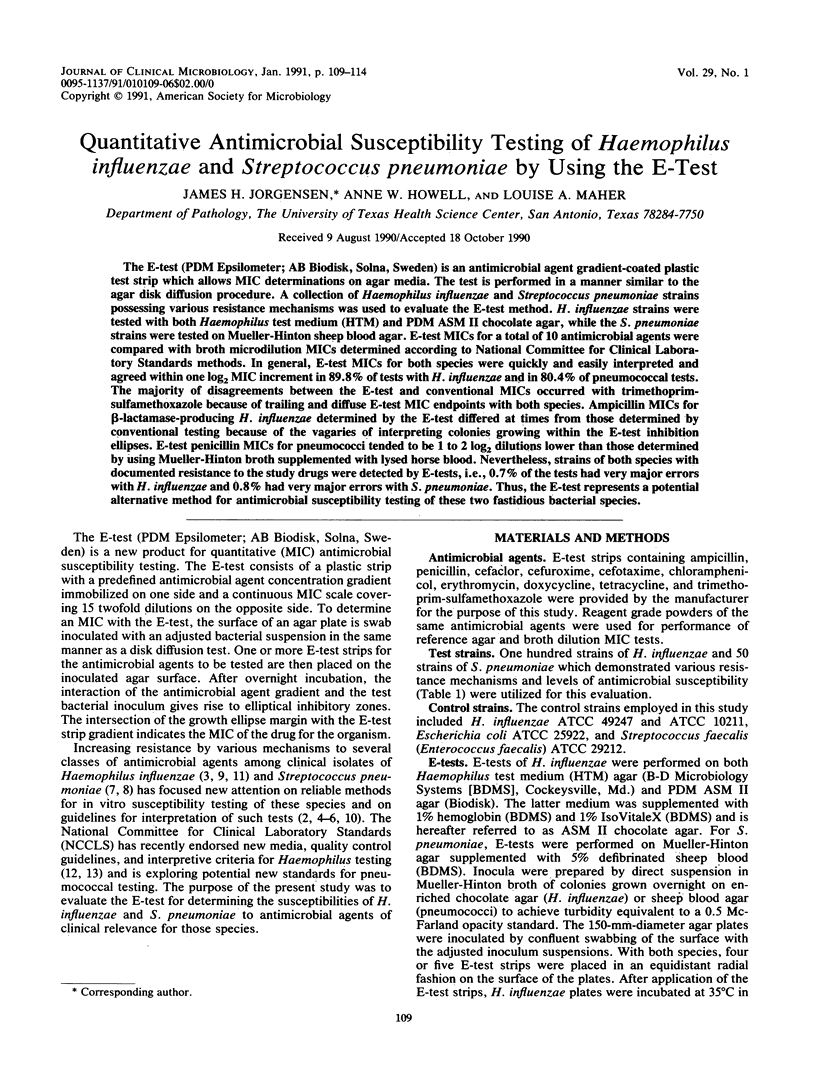
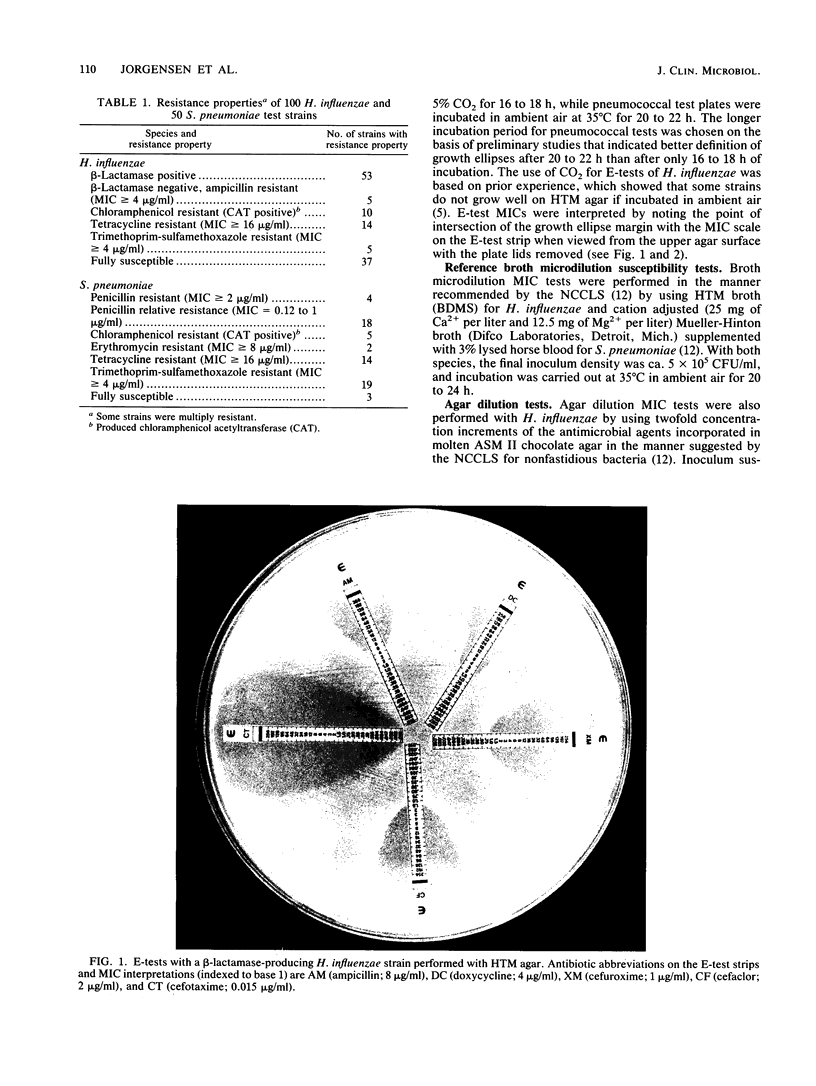
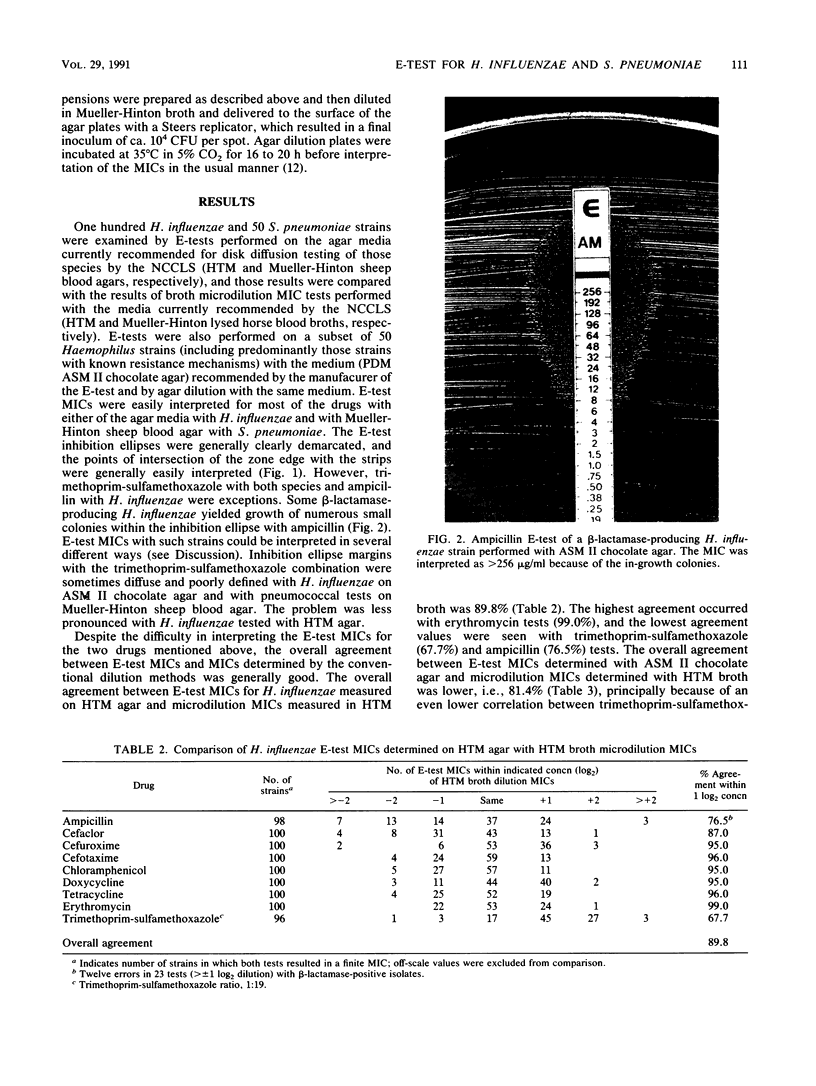
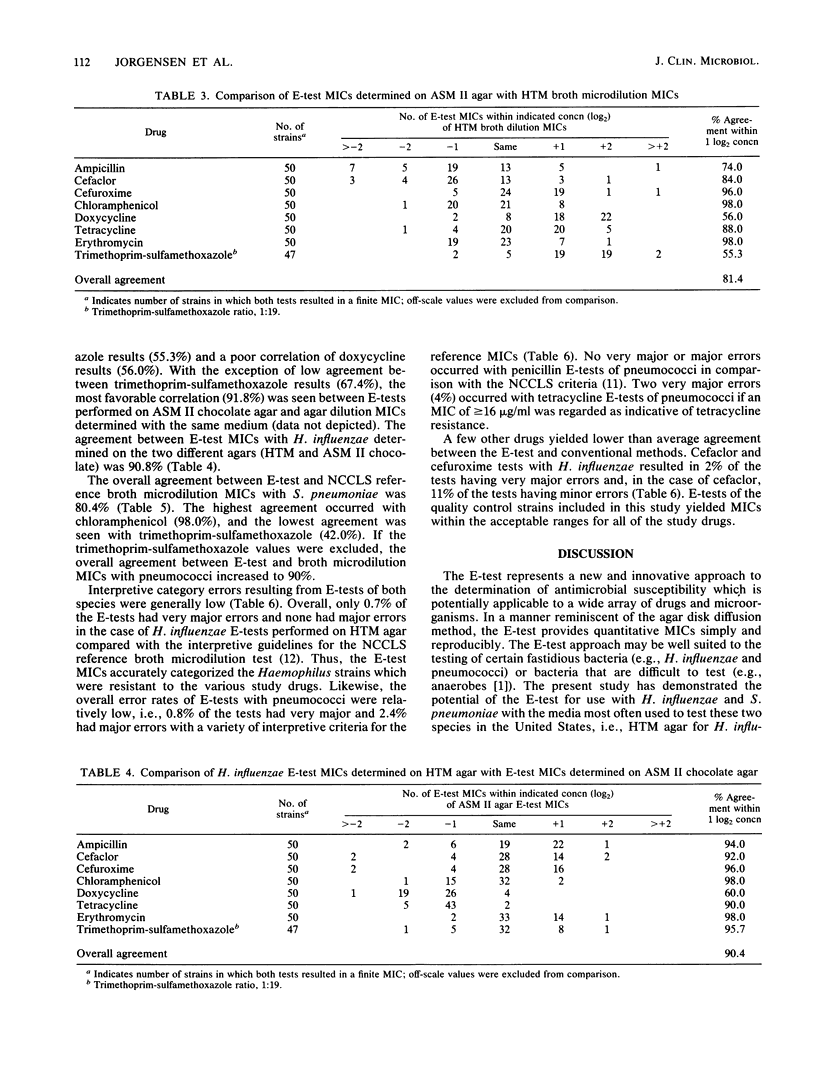
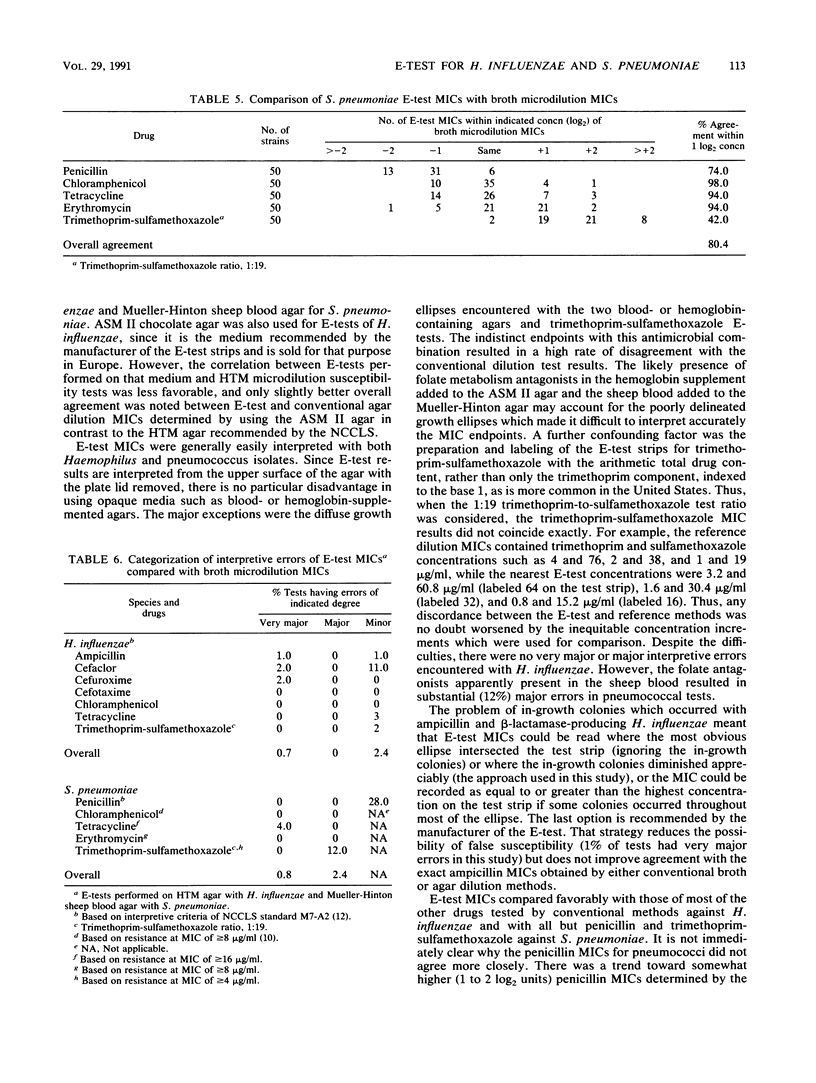
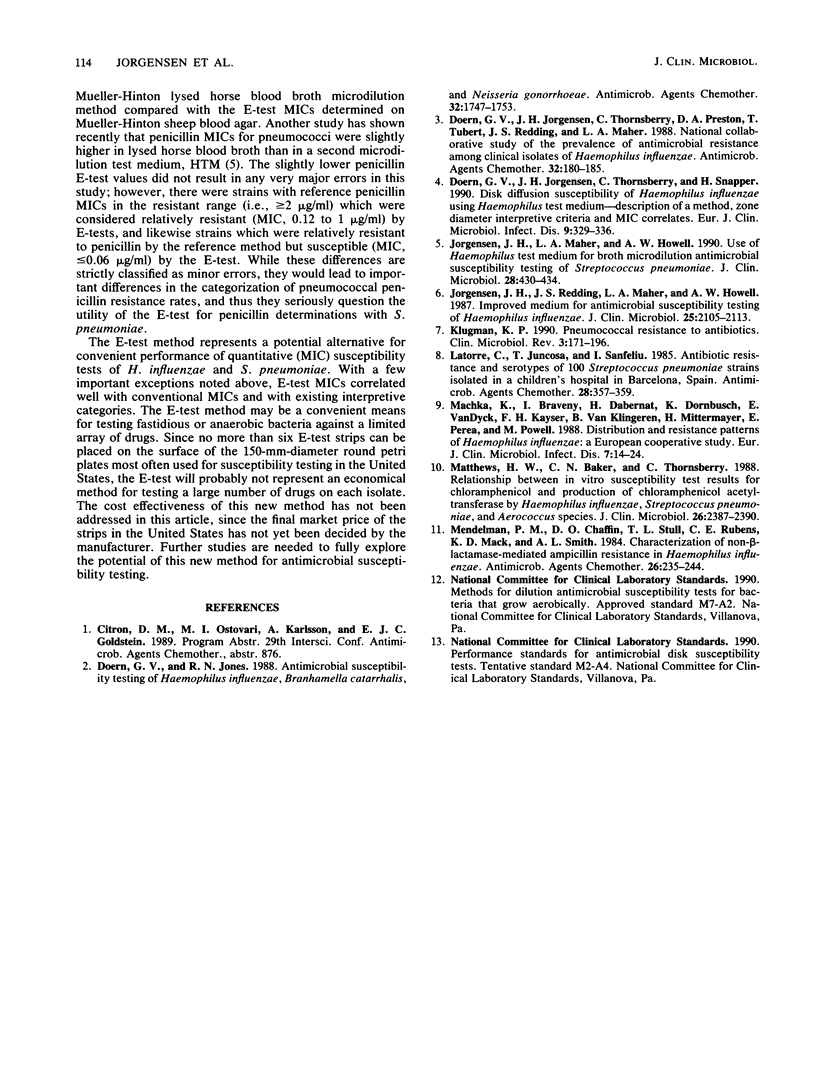
Images in this article
Selected References
These references are in PubMed. This may not be the complete list of references from this article.
- Doern G. V., Jones R. N. Antimicrobial susceptibility testing of Haemophilus influenzae, Branhamella catarrhalis, and Neisseria gonorrhoeae. Antimicrob Agents Chemother. 1988 Dec;32(12):1747–1753. doi: 10.1128/aac.32.12.1747. [DOI] [PMC free article] [PubMed] [Google Scholar]
- Doern G. V., Jorgensen J. H., Thornsberry C., Preston D. A., Tubert T., Redding J. S., Maher L. A. National collaborative study of the prevalence of antimicrobial resistance among clinical isolates of Haemophilus influenzae. Antimicrob Agents Chemother. 1988 Feb;32(2):180–185. doi: 10.1128/aac.32.2.180. [DOI] [PMC free article] [PubMed] [Google Scholar]
- Doern G. V., Jorgensen J. H., Thornsberry C., Snapper H. Disk diffusion susceptibility testing of Haemophilus influenzae using haemophilus test medium. Eur J Clin Microbiol Infect Dis. 1990 May;9(5):329–336. doi: 10.1007/BF01973739. [DOI] [PubMed] [Google Scholar]
- Jorgensen J. H., Maher L. A., Howell A. W. Use of Haemophilus test medium for broth microdilution antimicrobial susceptibility testing of Streptococcus pneumoniae. J Clin Microbiol. 1990 Mar;28(3):430–434. doi: 10.1128/jcm.28.3.430-434.1990. [DOI] [PMC free article] [PubMed] [Google Scholar]
- Jorgensen J. H., Redding J. S., Maher L. A., Howell A. W. Improved medium for antimicrobial susceptibility testing of Haemophilus influenzae. J Clin Microbiol. 1987 Nov;25(11):2105–2113. doi: 10.1128/jcm.25.11.2105-2113.1987. [DOI] [PMC free article] [PubMed] [Google Scholar]
- Klugman K. P. Pneumococcal resistance to antibiotics. Clin Microbiol Rev. 1990 Apr;3(2):171–196. doi: 10.1128/cmr.3.2.171. [DOI] [PMC free article] [PubMed] [Google Scholar]
- Latorre C., Juncosa T., Sanfeliu I. Antibiotic resistance and serotypes of 100 Streptococcus pneumoniae strains isolated in a children's hospital in Barcelona, Spain. Antimicrob Agents Chemother. 1985 Aug;28(2):357–359. doi: 10.1128/aac.28.2.357. [DOI] [PMC free article] [PubMed] [Google Scholar]
- Machka K., Braveny I., Dabernat H., Dornbusch K., Van Dyck E., Kayser F. H., Van Klingeren B., Mittermayer H., Perea E., Powell M. Distribution and resistance patterns of Haemophilus influenzae: a European cooperative study. Eur J Clin Microbiol Infect Dis. 1988 Feb;7(1):14–24. doi: 10.1007/BF01962165. [DOI] [PubMed] [Google Scholar]
- Matthews H. W., Baker C. N., Thornsberry C. Relationship between in vitro susceptibility test results for chloramphenicol and production of chloramphenicol acetyltransferase by Haemophilus influenzae, Streptococcus pneumoniae, and Aerococcus species. J Clin Microbiol. 1988 Nov;26(11):2387–2390. doi: 10.1128/jcm.26.11.2387-2390.1988. [DOI] [PMC free article] [PubMed] [Google Scholar]
- Mendelman P. M., Chaffin D. O., Stull T. L., Rubens C. E., Mack K. D., Smith A. L. Characterization of non-beta-lactamase-mediated ampicillin resistance in Haemophilus influenzae. Antimicrob Agents Chemother. 1984 Aug;26(2):235–244. doi: 10.1128/aac.26.2.235. [DOI] [PMC free article] [PubMed] [Google Scholar]




